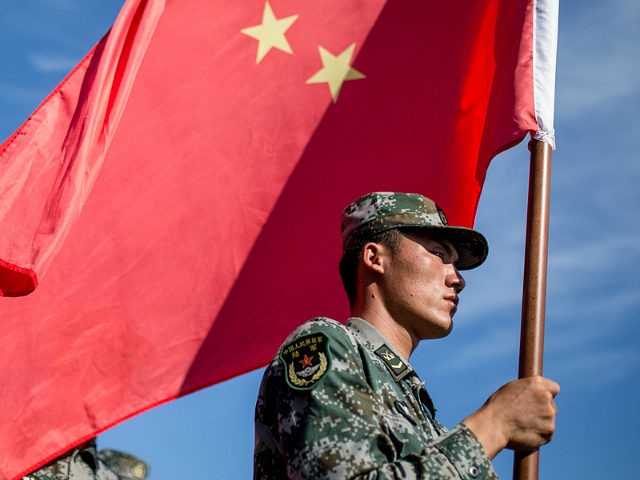The latest edition of NATO’s risk report, formally known as the 2017 Globsec NATO Adaptation Initiative, is a gloomy publication that warns the risk of conflict with adversaries like China and Russia is increasing, the odds of NATO winning such a conflict are decreasing, and trends such as increasingly powerful artificial intelligence are making violent conflict more likely.
Some of the headlines make it sound as if we need to worry about fighting Skynet and its Terminators as much as the Chinese and Russian armies, but the report merely lists artificial intelligence as one of about two dozen factors increasing the risk of armed conflict over the long term. The gist of the report’s recommendations is that NATO cannot afford to fall behind in understanding how A.I. can be applied to both real-world physical conflict and cyber-warfare.
“Critically, NATO must gain a far better understanding of the impact of new technologies such as artificial intelligence and data mining, together with their defense applications. Many of the companies driving new technologies are not defense giants, nor are many of them defense-focused. Such companies will need to be sure that if they invest limited people and resources in NATO projects, their existence will not be threatened by sclerotic acquisition practices,” the report advises.
“Artificial intelligence, deep learning, machine learning, computer vision, neuro-linguistic programming, virtual reality, and augmented reality are all part of the future battlespace,” the authors write. “They are all underpinned by potential advances in quantum computing that will create a conflict environment in which the decision-action loop will compress dramatically from days and hours to minutes and seconds … or even less.”
The authors describe this advance in computer technology as “the most revolutionary changes in conflict since the advent of atomic weaponry and in military technology since the 1906 launch of HMS Dreadnought.”
There is a bit of science fiction sprinkled in the NATO report, but it is plausible sci-fi: Warnings about the hyper warfare applications of thinking machines, nano-technology, and the possibility that future conflict between advanced powers will happen too quickly for human minds to keep pace with battlefield developments. There are some fairly specific concerns about A.I. becoming part of the military command structure, which conjures visions of human soldiers and drone swarms taking orders from machines because human battlefield commanders simply think too slowly to keep up.
A major theme of the report is that NATO is not ready for “hyper warfare,” meaning the combination of conventional military force, cyber warfare, and terrorist tactics. So far, it is largely theoretical, but if hyper warfare ever happens, it will be the next evolution of the 20th Century’s “total war” doctrine, which made civilian industry into military targets. Hyper war would be total warfare carried out at blinding speed, with every advanced electronic device in households across the developed world becoming a weapon. The “human capacity to think, decide, act, and recover” would be threatened by the intensity of the conflict across both military battlefields and civilian intellectual space.
One of the report’s recommendations is for NATO to develop its own version of the U.S. Defense Advanced Research Projects Agency (DARPA) to get a better handle on hybrid warfare, design redundant systems that are harder for hackers to disable, and develop NATO’s own hybrid arsenal. NATO troops got a sneak preview of what hybrid warfare would be like this year when they discovered carrying cell phones anywhere near Russia’s sphere of influence is a bad idea.
Many of the other trends charted in the NATO report are factors in social unrest that make riots, insurrection, or malicious interference by foreign adversaries more likely. Both “poorly-integrated or assimilated Muslim communities within Europe” and “reactionary, nativist movements” are mentioned as threats that could be “manipulated by external powers.” The “growing symbiotic relationship” between politically-motivated terrorists and profit-oriented criminal gangs is also a cause for concern.
As for the big threats, the NATO Alliance mourns the evident failure of the 25-year effort to make Russia a “partner,” worrying that Moscow seeks to “revise the post-Cold War settlement” by using espionage and hyper warfare techniques to destabilize and distract its adversaries while it rebuilds the Soviet empire. China is seen as not only aggressive in various theaters, but probably more advanced than even the United States in hyper warfare tactics.
The report not-so-subtly prods NATO members to step up and meet their spending commitments, and to use that money wisely for “buying what they need, and not what they want,” despite the political challenges of convincing European populations to accept significantly higher defense spending. The need to “re-balance burden-sharing” so that the 28 other NATO allies pay at least half of the expenses, while the United States covers the other half, is stressed. The U.S. currently “provides 75% of Alliance forces and pays some 68% of the cost.”
The NATO risk assessment includes a dismaying thread of doubt about the warfighting capability of non-U.S. forces in the Alliance, providing several recommendations for better training, more comprehensive military exercises, improved strategic doctrines, improved protection against cyber attacks for the NATO communications structure, and a greater willingness to take on missions without American assistance.
“Over the coming years NATO must become the primary instrument in changing the role of the bulk of non-US armed forces so that they can operate across the conflict spectrum,” the report advises. “This will require Alliance forces that have sufficient mass to act as both stabilization and reconstruction forces outside of Europe, but with sufficient networked, manoeuvre forces able to fight brigade or division-size battles in defense of NATO territory.”

COMMENTS
Please let us know if you're having issues with commenting.